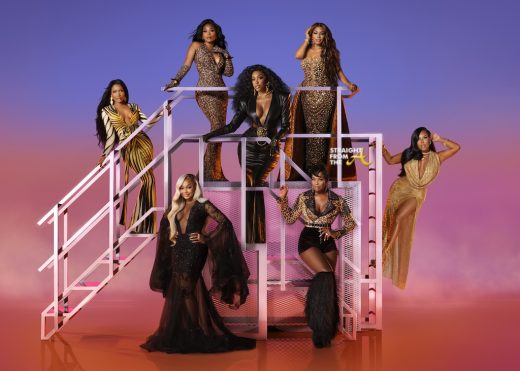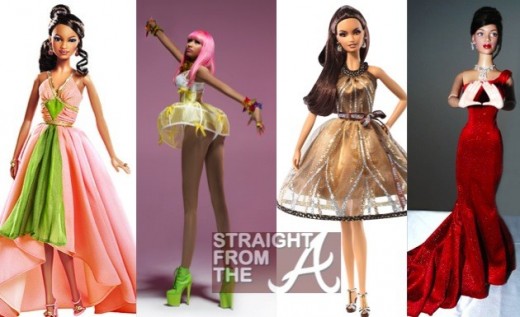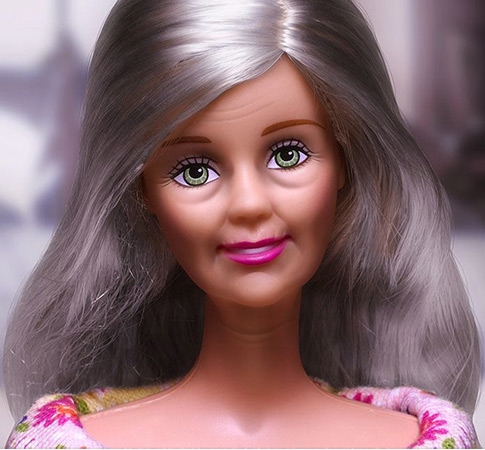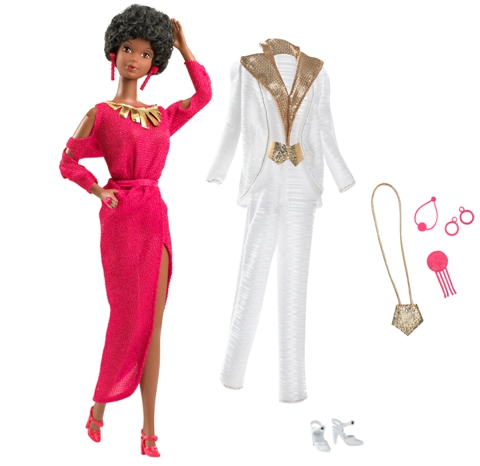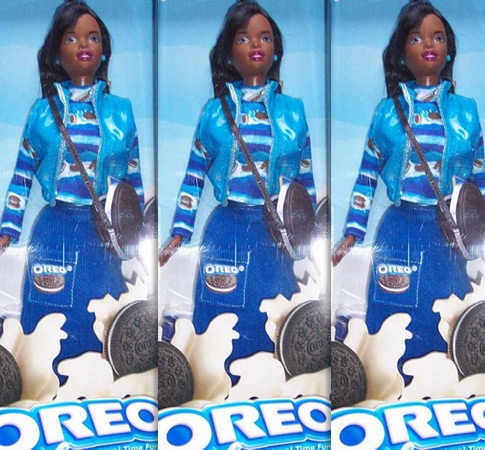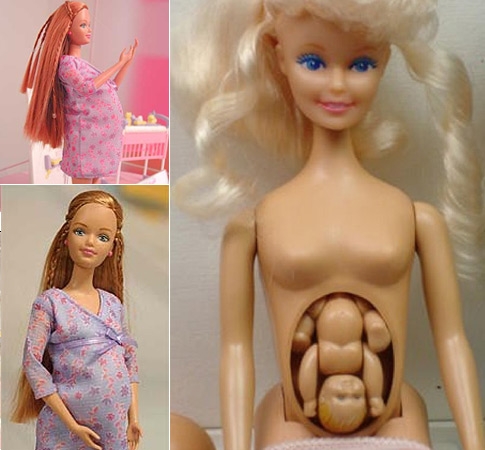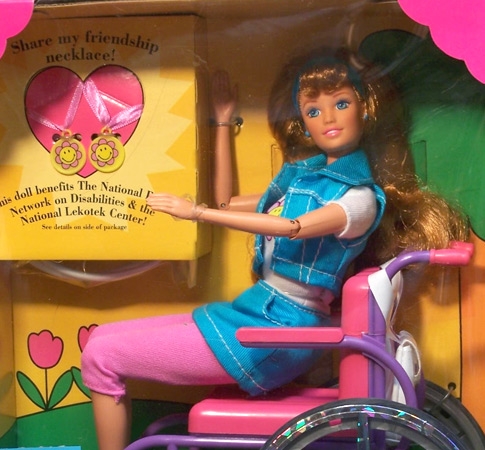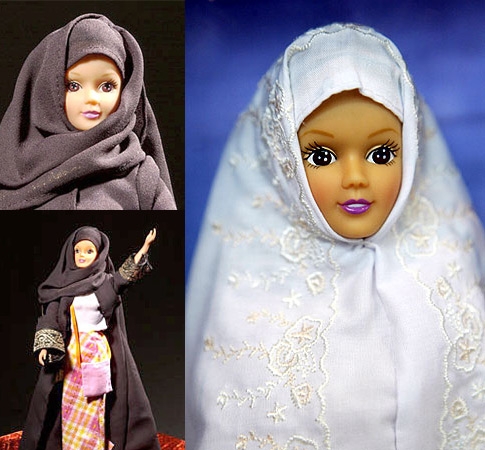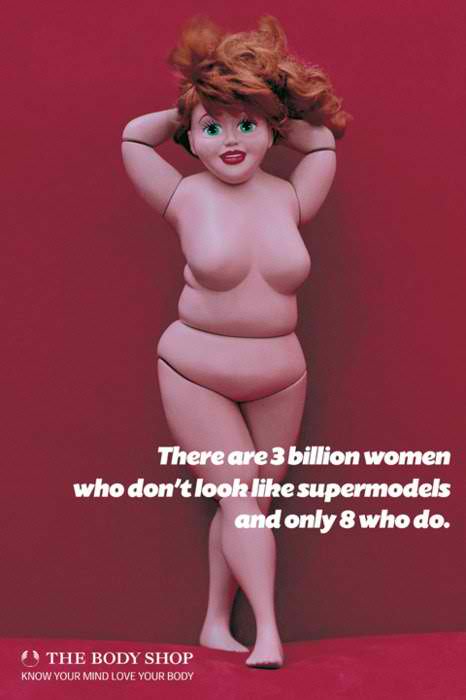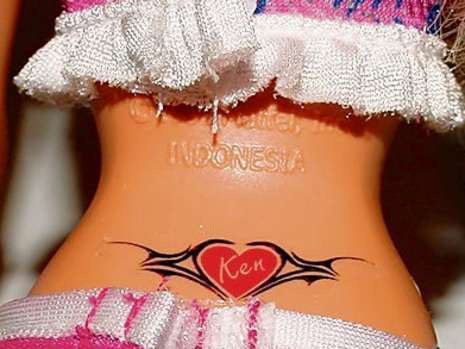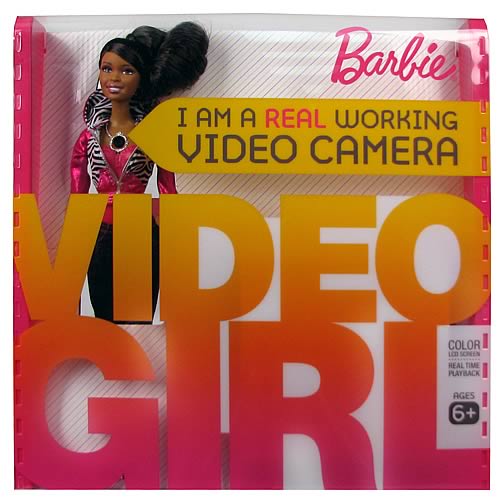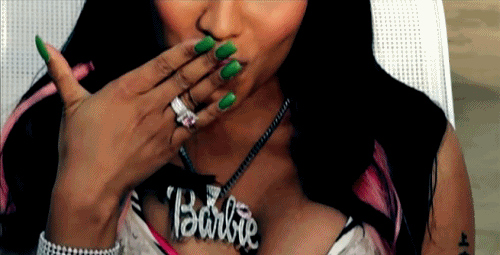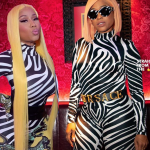Barbie has often taken on several shades of brown, yellow, tan, beige… and has been a role model for little girls all over the world.
In her 50+ years as the worlds most favorite doll, Barbie has been to college, bought a few houses, vans, cars, had almost every career and traveled the world.
Don’t tell anyone, but Barbie turned 52 back in March and would look like this (if she ever aged)…
At 50 something, Barbie could probably tell you some thangs. Especially since she’s been involved in more than her share of scandalous situations. No joke…
Check out a few of the most controversial Barbie doll creations below:
First I have to note that it took almost 30 years before Barbie crated a Black version of it’s popular blond haired, blue-eyed doll, complete with curly fro and disco apparel…
Although there were other Africian-American dolls in the Barbie family [Black (Colored) Francie (1967), Dianne Carroll’s Julia Barbie (1968), Christie (with the extra long hair – 1968) and Ken’s Black friend Brad], the very first Black Barbie didn’t arrive on the scene until 1980.
Fast forward into the 90’s and Barbie thought that a Black “Oreo” Barbie would be a good idea…
Oreo Fun Barbie was marketed as someone with whom little girls could play after class and share “America’s favorite cookie.”
As had become the custom, Mattel manufactured both a white and a black version. Critics argued that in the African American community Oreo is a derogatory term meaning that the person is “black on the outside and white on the inside,” like the chocolate sandwich cookie itself.
Needless to say, the no one bought it and Mattel ended up pulling all unsold stock, making the Oreo Fun Barbie a collectors item.
Barbie?s best friend, the pregnant Midge, became the subject of controversy as well. A number of parents worried that the teenage-like doll, sold with a baby in her belly, was not suitable for children.
Mattel launched Barbie?s wheelchair-bound friend Becky, in May 1997, but came under fire when a teenager with cerebral palsy pointed out that the doll?s wheelchair did not fit into the elevator in Barbie?s house.
Cursed by the Saudi religious authorities, blonde haired, blue-eyed Barbie was banned from several Muslim countries. In 2003, an alternative to the “infidel” American doll was introduced, the hijab-wearing Fulla (produced by an Emirati toymaker and the Syrian NewBoy).
In 2006 Mattel sent The Body Shop a cease and desist order after it created posters featuring Ruby (a self proclaimed Anti-Barbie spokesperson).
Complaints included her ?nude and nippless figure? being exposed to the public, which Mattel claimed offended people in the US and China.
According to several beauty blogs, the ad was also removed from the Hong Kong Mass Transit Railway.
Barbie got a few tramp stamps in 2009, when Mattel launched a Totally Tattoos Barbie with a range of tattoos that could be applied to the doll. It was the lower back tattoo that led to controversy.
Mattel’s promotional material read “Customize the fashions and apply the fun temporary tattoos on you too”, but Ed Mayo, chief executive of Consumer Focus, argued that children might want to get tattooed themselves.
Mattel released “Barbie Video Girl” in July 2010, a Barbie doll with a pinhole video camera in its chest, enabling clips of up to 30 minutes to be recorded, viewed and uploaded to a computer via a USB cable. 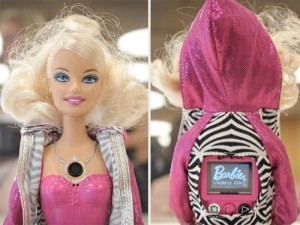
On November 30, 2010, the FBI issued a warning in a private memo that the doll could be used to produce child pornography, although it stated publicly that there was “no reported evidence that the doll had been used in any way other than intended.”
So there you have it. Over 50 years of scandal involving a lil ole doll! Whoodathunkit?
Unfortunately the moral of this story is… Barbie can be anything… but she CAN’T be fat! 😯
![Straight From The A [SFTA] – Atlanta Entertainment Industry Gossip & News - Atlanta's Most Reliable Source of Entertainment Gossip!](https://straightfromthea.com/wp-content/uploads/2015/04/sftalogo31.png)

